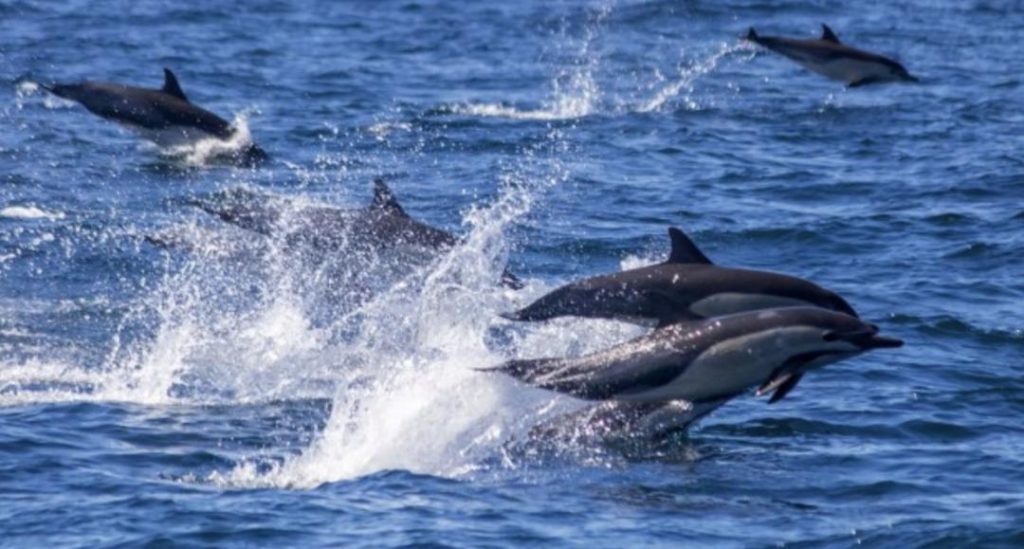
Dolphins & Whales Regularly Socialise with Each Other: Study
In a fascinating discovery, researchers from Griffith University have found that dolphins and whales frequently socialise with each other, engaging in playful interactions that are often mutual. The study, which analyzed videos and photographs of interactions between baleen whales and dolphins, covered 19 species across 199 separate events.
The findings, published in a recent study, shed new light on the complex social dynamics between these two marine mammals. For centuries, scientists have been aware that dolphins and whales coexist in the oceans, but the extent of their social interactions has only recently been fully explored.
The study, led by Dr. Kitrinne Mulvaney, a researcher at Griffith University’s School of Environment and Science, involved analyzing a vast dataset of videos and photographs taken by researchers, conservationists, and tourists. The images were captured in various locations around the world, including Australia, the United States, and South Africa.
The researchers found that the most common interaction between dolphins and whales involved dolphins swimming near the whale’s head. This behavior was observed in 44% of the events studied, and was often accompanied by playful behaviors such as chasing, splashing, and breaching (jumping out of the water).
The study also found that bottlenose dolphins were the most involved dolphin species in these interactions, accounting for 64% of the events observed. Other dolphin species, such as common dolphins and Pacific white-sided dolphins, were also found to engage in playful interactions with whales.
But what’s perhaps most remarkable about these findings is the level of mutualism observed between the dolphins and whales. In many cases, the dolphins and whales were seen to be actively seeking out each other’s company, and engaging in playful behaviors that seemed to benefit both parties.
For example, in one observed event, a bottlenose dolphin was seen swimming alongside a gray whale, playing a game of “keep-away” with a schools of fish. The whale, in turn, was seen using its powerful tail to create a “wave” that the dolphin could ride.
These findings have significant implications for our understanding of the social behavior of dolphins and whales. For years, researchers have been studying the complex societies of dolphins, which are known to be highly social and intelligent animals. But the discovery of playful interactions between dolphins and whales challenges our traditional view of these marine mammals as solitary animals.
Dr. Mulvaney and her team believe that these interactions may play an important role in the social development and learning of both dolphins and whales. “Play is a fundamental component of social learning and development in many species, including humans,” Dr. Mulvaney said in a statement. “These findings suggest that dolphins and whales may be using play to build relationships and learn important skills, such as hunting and communication.”
The study’s findings also highlight the importance of preserving and protecting the habitats of these marine mammals. As the oceans continue to face threats from pollution, overfishing, and climate change, it is essential that we take action to protect the delicate balance of marine ecosystems.
In conclusion, the study’s findings offer a fascinating glimpse into the complex social dynamics of dolphins and whales. The discovery of playful interactions between these two marine mammals challenges our traditional view of their behavior, and highlights the importance of preserving and protecting their habitats.
Source:






